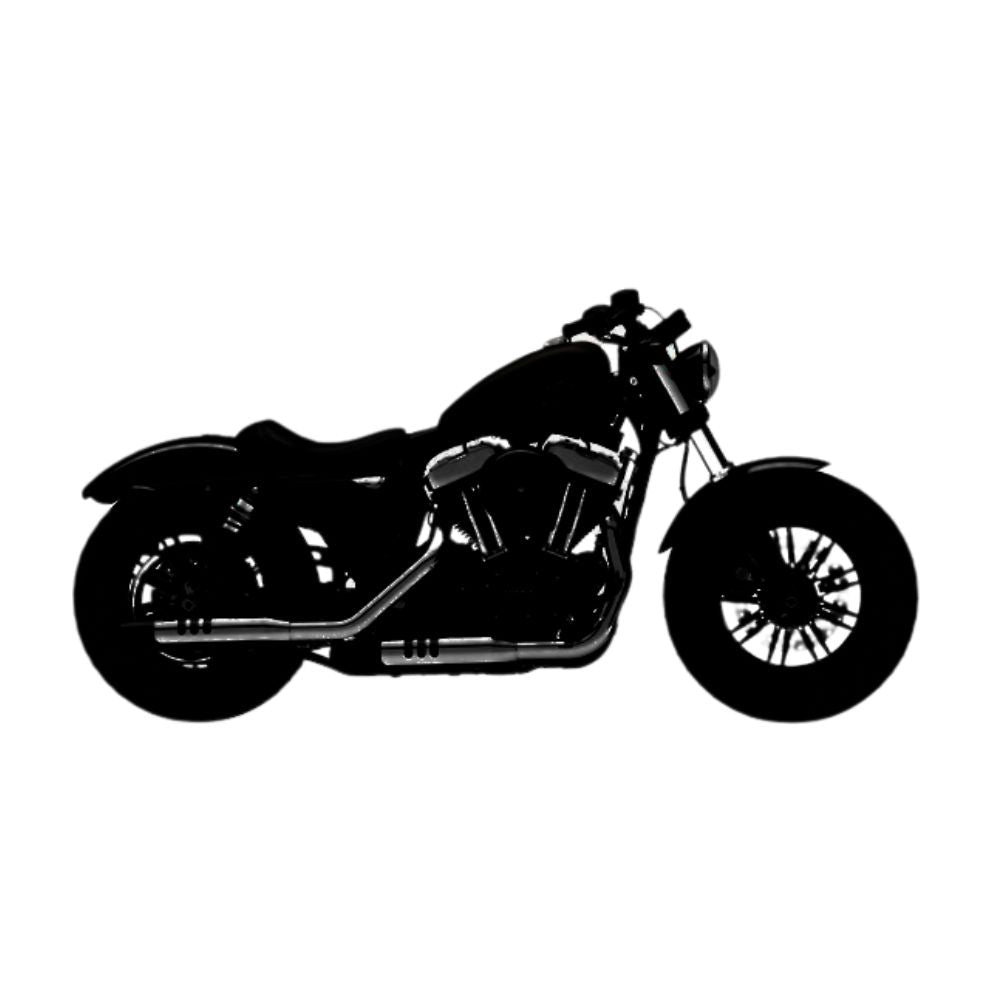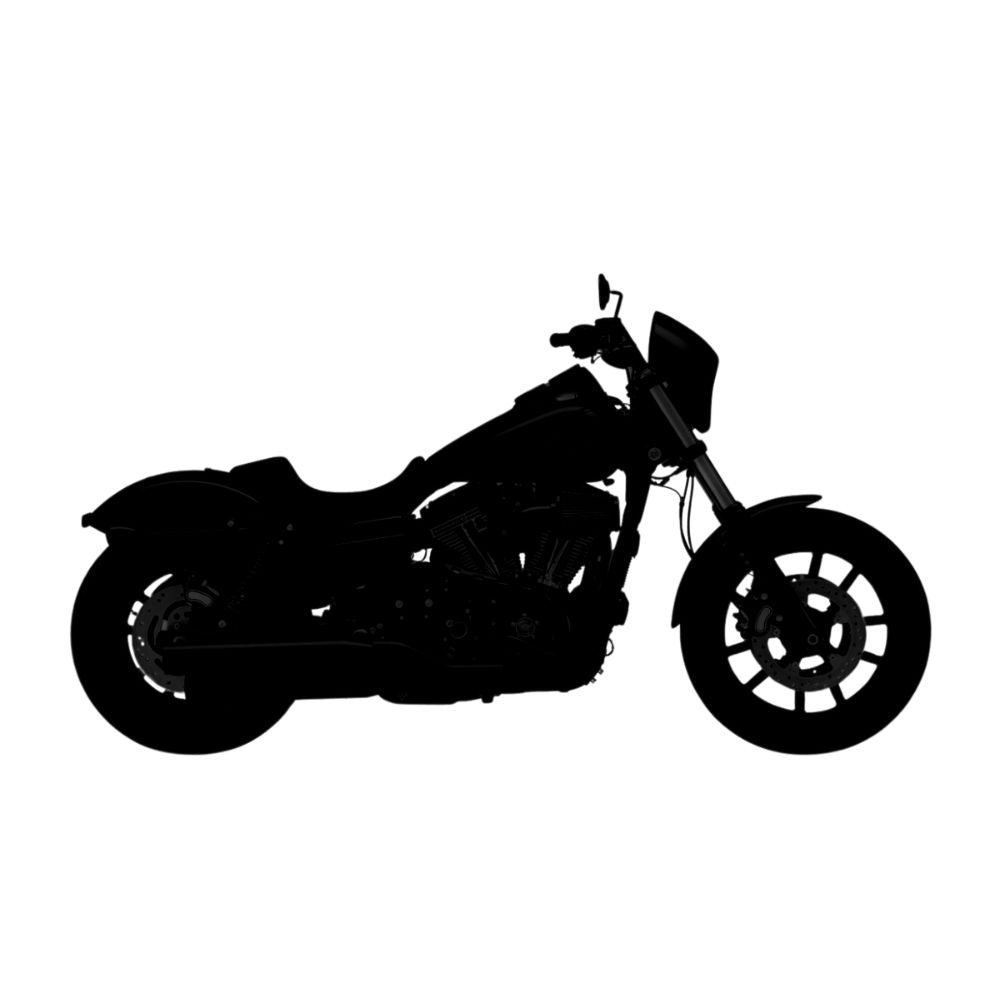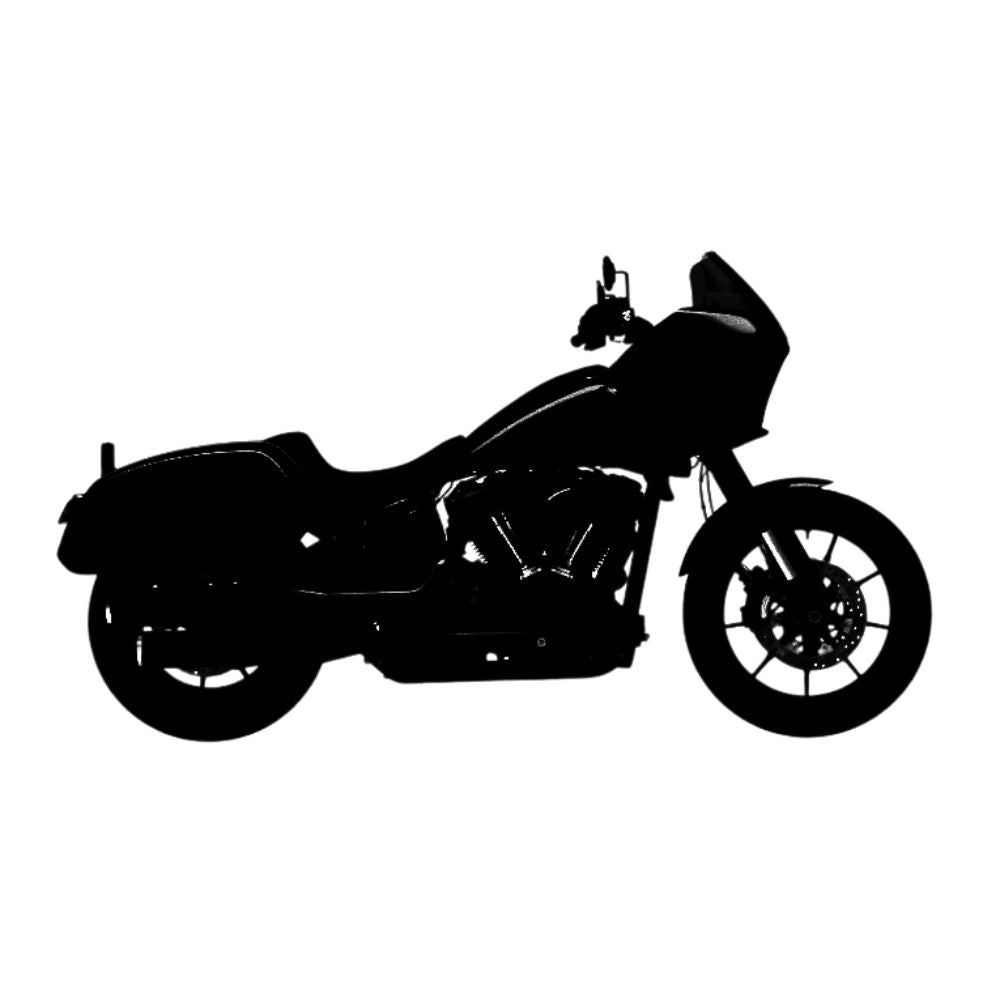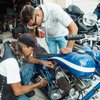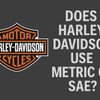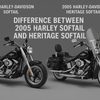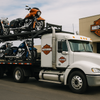harley davidson frame types
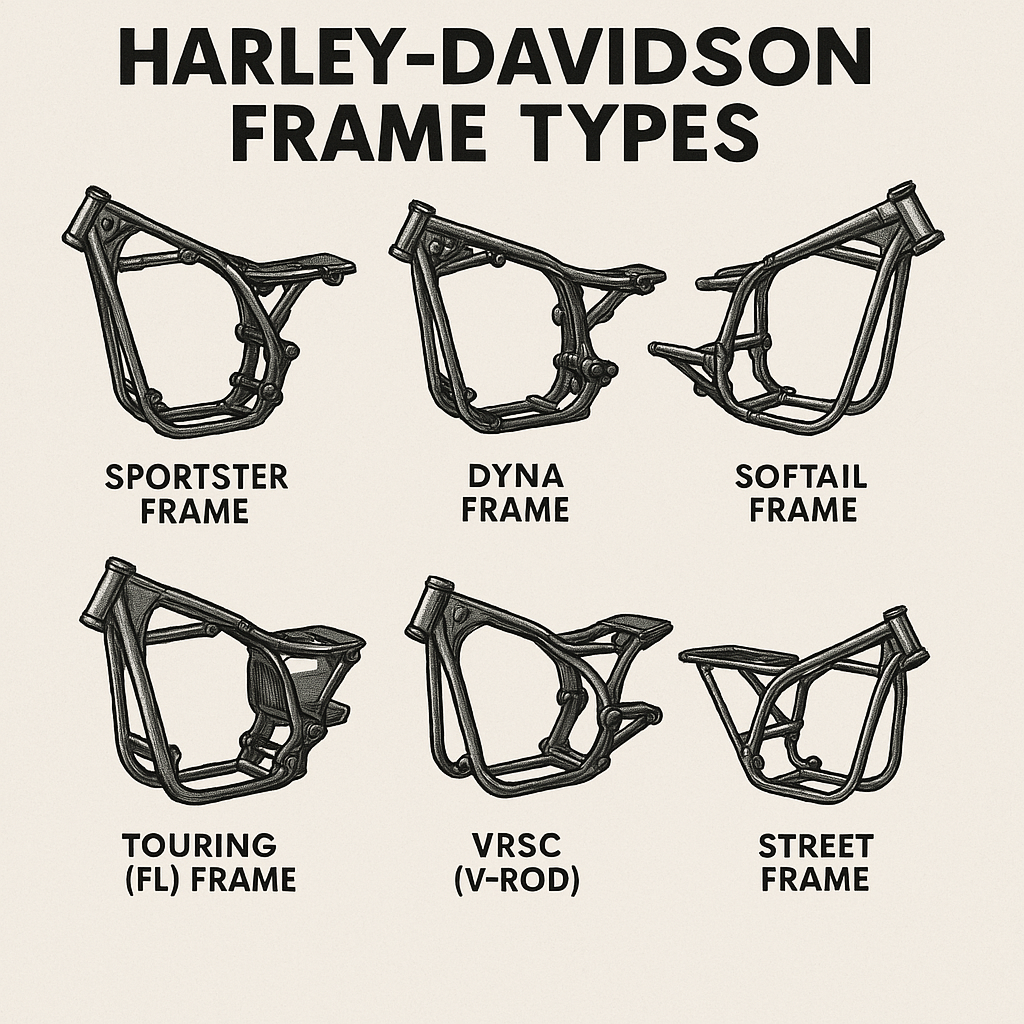
Harley-Davidson has produced a number of distinct frame types over the years, each optimized for different riding styles, aesthetics, and engine configurations.
Below is a broad overview of the major Harley-Davidson frame families you’ll encounter:
1. Sportster Frame
- Overview: First introduced in 1957, the Sportster lineup is known for its relatively compact, lightweight design.
-
Key Characteristics:
- Smaller backbone compared to big twin frames.
- Traditionally used the engine as a stressed member (particularly in more modern rubber-mounted Sportsters from 2004 onward).
- Offers a nimble, agile feel well-suited to shorter trips or urban riding.
- Models: Iron 883, Forty-Eight, Roadster, and other XL designations.
2. Dyna Frame (Discontinued and replaced by newer Softail models in 2018)
- Overview: Introduced in the early 1990s (the FXD line), the Dyna was known for its rubber-mounted Big Twin engine and dual exposed rear shocks.
-
Key Characteristics:
- Traditional “twin-shock” design on the outside of the frame (one shock on each side).
- Rubber-mounted engine to help reduce vibration.
- Considered a middleweight frame—sportier than touring bikes but heavier and larger than Sportsters.
- Models: Super Glide (FXD), Wide Glide (FXDWG), Street Bob (FXDB), Low Rider (FXDL).
3. Softail Frame
- Overview: Debuted in 1984, Softails are designed to emulate the look of a rigid (hardtail) frame but conceal the rear suspension under the transmission.
-
Key Characteristics:
- Hidden or “under-slung” shock(s) beneath the chassis.
- Provides the classic silhouette of an old-school rigid frame while offering modern suspension comfort.
- Generally more comfortable and heavier than Sportsters and Dynas.
- Models: Fat Boy, Heritage Classic, Softail Standard, Slim, Breakout, Deluxe.
4. Touring (FL) Frame
- Overview: Often referred to as the “FL” frame, the Touring line is built for long-distance comfort, stability, and carrying capacity.
-
Key Characteristics:
- Large-diameter backbone and heavy-duty swingarm to handle weight (rider, passenger, luggage).
- Rubber-mounted engine to reduce vibration; uses dual rear shocks (commonly air-adjustable).
- Designed for touring features like saddlebags, fairings, and larger fuel tanks.
- Models: Road King (FLHR), Street Glide (FLHX), Road Glide (FLTRX), Electra Glide (FLHT), Ultra Limited (FLHTK).
5. VRSC (V-Rod) Frame
- Overview: Launched in 2001 with the V-Rod (VRSC stands for “V-Twin Racing Street Custom”), this was Harley’s first mass-produced liquid-cooled engine bike.
-
Key Characteristics:
- Hydroformed tubular steel perimeter frame—a major departure from Harley’s traditional designs.
- Low-slung, drag-inspired stance with a wide rear tire.
- Engineered in collaboration with Porsche, the Revolution engine required a unique geometry and cooling layout.
- Models: V-Rod, Night Rod, Muscle, Street Rod (early VRSCR).
6. Street Frame
- Overview: Introduced with the Street 500 and Street 750 models (XG platform) in 2014, aimed at entry-level and urban riders.
-
Key Characteristics:
- Smaller, more compact than the Sportster or Dyna.
- Liquid-cooled Revolution X engine.
- Designed for quick maneuvering and lower seat height, appealing to newer riders or those needing a lighter Harley.
Other Historical/Notable Frames
-
Rigid / Hardtail Frames (Pre-1950s)
- Early Harleys came with no rear suspension (or minimal seat-spring suspension). Popular with custom builders who like the minimalist, old-school look—but they deliver a rough ride.
-
Servi-Car / Trike Frames
- Harley-Davidson also built three-wheeled Servi-Cars (1930s onward) and later modern trikes (Tri Glide, Freewheeler). These use heavily modified or purpose-built rear sections to accommodate two rear wheels.
-
CVO (Custom Vehicle Operations) Variants
- Not exactly a unique frame, but CVO models often feature upgraded components or slightly altered geometry/suspension. The underlying frame typically falls under the Touring or Softail category.
How Frame Type Influences Riding
- Sportster: Great for city commuting, lighter, more maneuverable.
- Dyna (legacy): Sits between sporty and touring, known for that “classic Harley feel” with moderate comfort.
- Softail: Combines a traditional “hardtail” look with hidden rear suspension, often chosen by riders wanting classic lines without sacrificing comfort.
- Touring: Built for serious mileage; heavier, more stable, lots of storage, designed for rider and passenger comfort over long distances.
- VRSC (V-Rod): Modern, performance-oriented design with a sportier feel and liquid cooling, distinct from traditional air-cooled Harleys.
- Street: Entry-level models with a more compact design and liquid-cooled engine, suited for urban riding.
In summary, Harley-Davidson frames range from classic rigid designs to modern concealed-suspension platforms. Each family—Sportster, Dyna, Softail, Touring, VRSC, and Street—reflects a unique blend of style, performance, and comfort, allowing riders to pick the layout that best suits their needs and tastes.
What about the new models ? There is the article on our blog.

Rémi
Founder of Kafein Kustoms, Rémi is a passionate motorcycle enthusiast and the founder of Kafein Kustoms. With years of experience in customization, he specializes in Clubstyle builds and premium parts, blending performance and style to help riders create their dream bikes.

